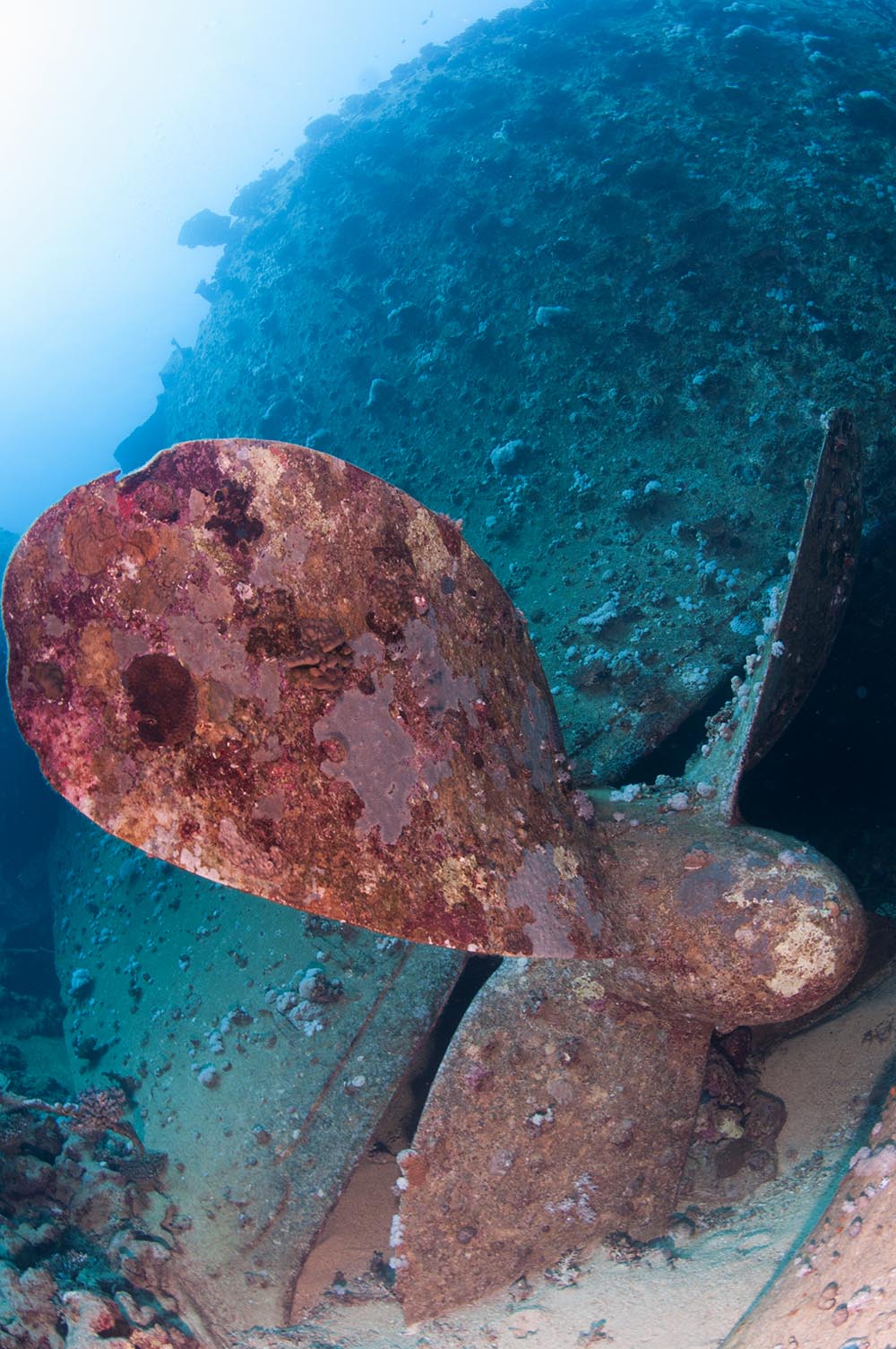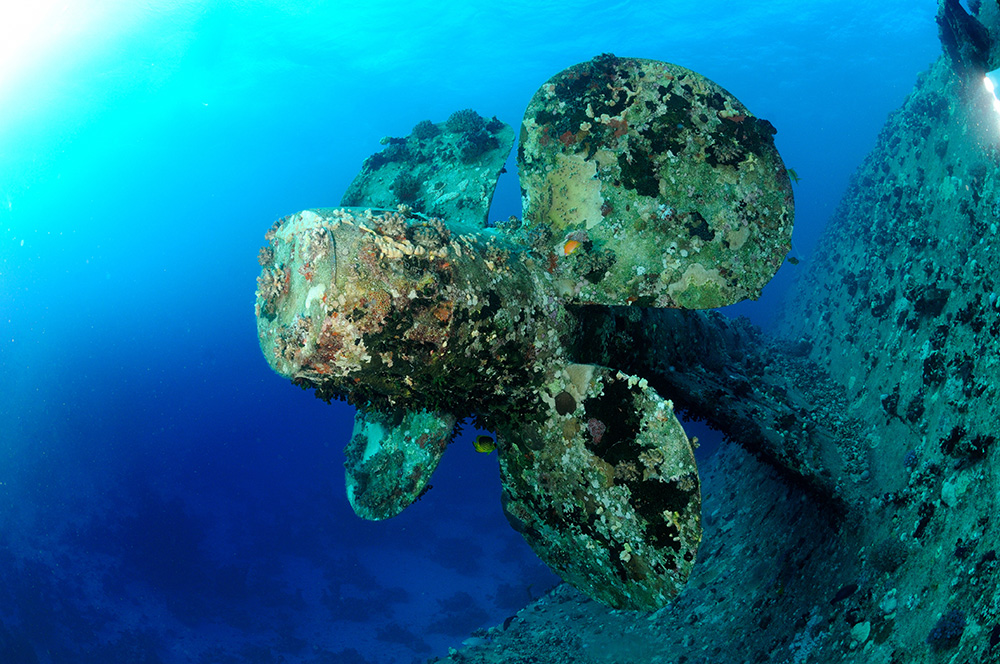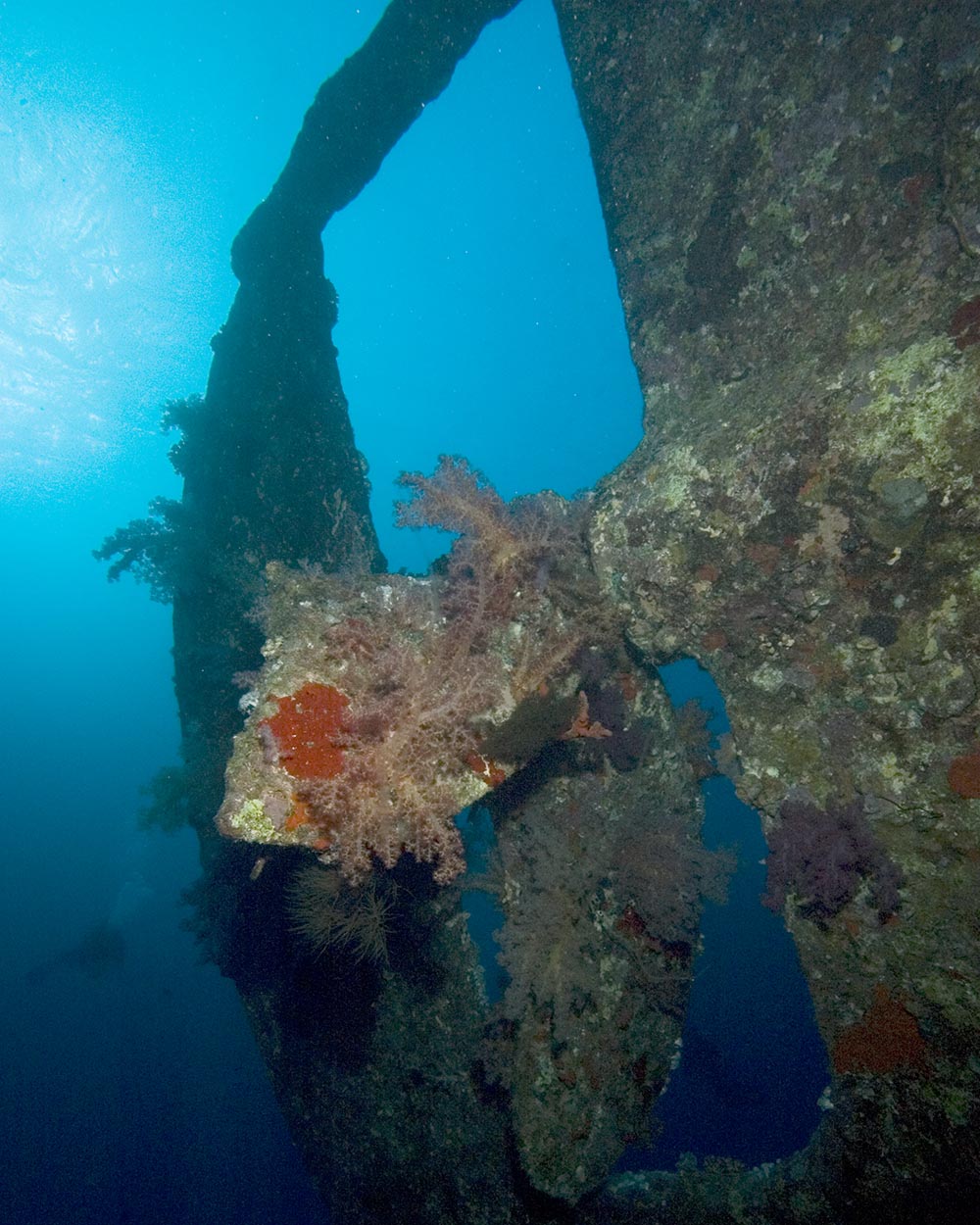I spend a fair amount of time underwater, pointing my camera at one thing or another, with varying degrees of success. Like many divers, I will explore shipwrecks when the opportunity arises, and like most photographers, I seem to have quite a collection of propeller shots.

the 120 year old SS Glanmire, off the coast of southeast Scotland. The prop is covered in azooxanthellate soft coral.
Very often, dive guides will suggest: “get to the stern and have a look at the prop” and then tour the rest of the wreck. This has one important function in that you are better to reach your maximum depth at the beginning of a dive rather than mid way or at the end.
In general, if a ship has run aground, it’s ‘pointy end’ first, so the prop is clear of the reef and quite visible.
Perhaps it is this alone that makes us shoot them, often with diver in frame for effect? I suspect though, that it’s more than that, I think props are somehow emblematic of the ships’ fate. The most massive and powerful component of the ship, at rest and part of the reef. There is no more somber image of a prop than the one in this post’s lead image. The Salem Express, a passenger ferry, sank with an unknown number of people aboard, estimates suggest a thousand souls were lost. Opinion is divided about whether the wreck should be visited.

Another Red Sea wreck, I suspect if there were fewer divers the prop would be more covered in coral.
Some props are purposefully kept clear. One prop, belonging to the famous SS Thistlegorm in the Red Sea, has one clear and polished edge, as divers show their respect to the men who lost their lives on the vessel by running their hands over the propeller’s bronze edge.












0 Comments